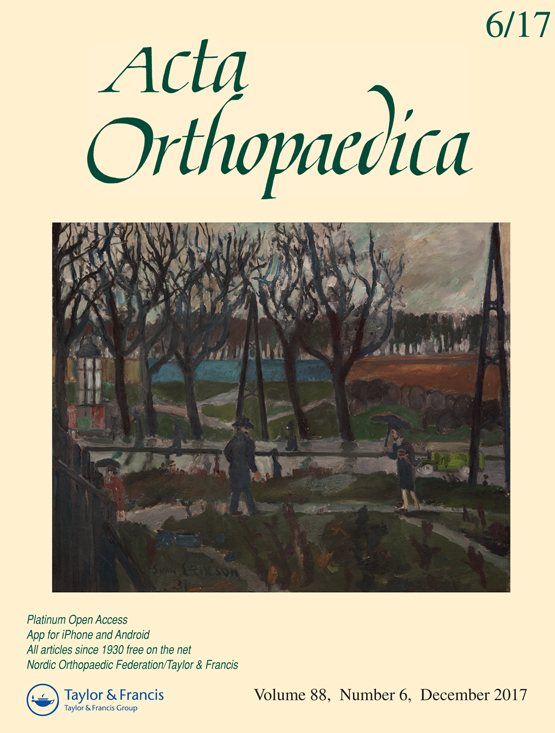To what extent can soft-tissue releases improve hip displacement in cerebral palsy?
DOI:
https://doi.org/10.1080/17453674.2017.1365471Abstract
Background and purpose — Hip displacement is frequent in nonambulatory children with cerebral palsy (CP) and treatment is controversial. This prospective study assesses the effectiveness of soft-tissue releases to treat hip subluxation, analyses prognostic factors for outcome, and identifies time to failure in hips with poor outcome. Patients and methods — 37 children (16 girls) with hip subluxation were recruited from the population-based screening program for children with CP in Norway. They had consecutively undergone soft-tissue releases (bilateral tenotomies of adductors and iliopsoas) at a mean age of 5.0 (2.8–7.2) years. Functional classification was Gross Motor Function Classification System (GMFCS) level III in 9 children, level IV in 10, and level V in 18 children. The outcome was termed good if the patient had not undergone further hip surgery and if the migration percentage (MP) of the worst hip at the latest follow-up was <50%. The mean follow-up time was 7.3 (5.1–9.8) years. Results — The outcome was good in all the ambulatory children and in 17 of 28 of the nonambulatory children. The only independent preoperative risk factor for poor outcome was MP ≥50%. The mean time to failure was 2.2 (1–5) years postoperatively and the reasons for failure were insufficient initial correction and later deterioration of displacement. Interpretation — Bilateral soft-tissue release is recommended in both ambulatory and nonambulatory children with hip subluxation. The operation should be performed before the hip displacement reaches 50%.Downloads
Download data is not yet available.
Downloads
Additional Files
Published
2017-11-02
How to Cite
Terjesen, T. (2017). To what extent can soft-tissue releases improve hip displacement in cerebral palsy?. Acta Orthopaedica, 88(6), 695–700. https://doi.org/10.1080/17453674.2017.1365471
Issue
Section
Articles
License
Copyright (c) 2017 Terje Terjesen

This work is licensed under a Creative Commons Attribution-NonCommercial 3.0 Unported License.
Acta Orthopaedica (Scandinavica) content is available freely online as from volume 1, 1930. The journal owner owns the copyright for all material published until volume 80, 2009. As of June 2009, the journal has however been published fully Open Access, meaning the authors retain copyright to their work. As of June 2009, articles have been published under CC-BY-NC or CC-BY licenses, unless otherwise specified.







